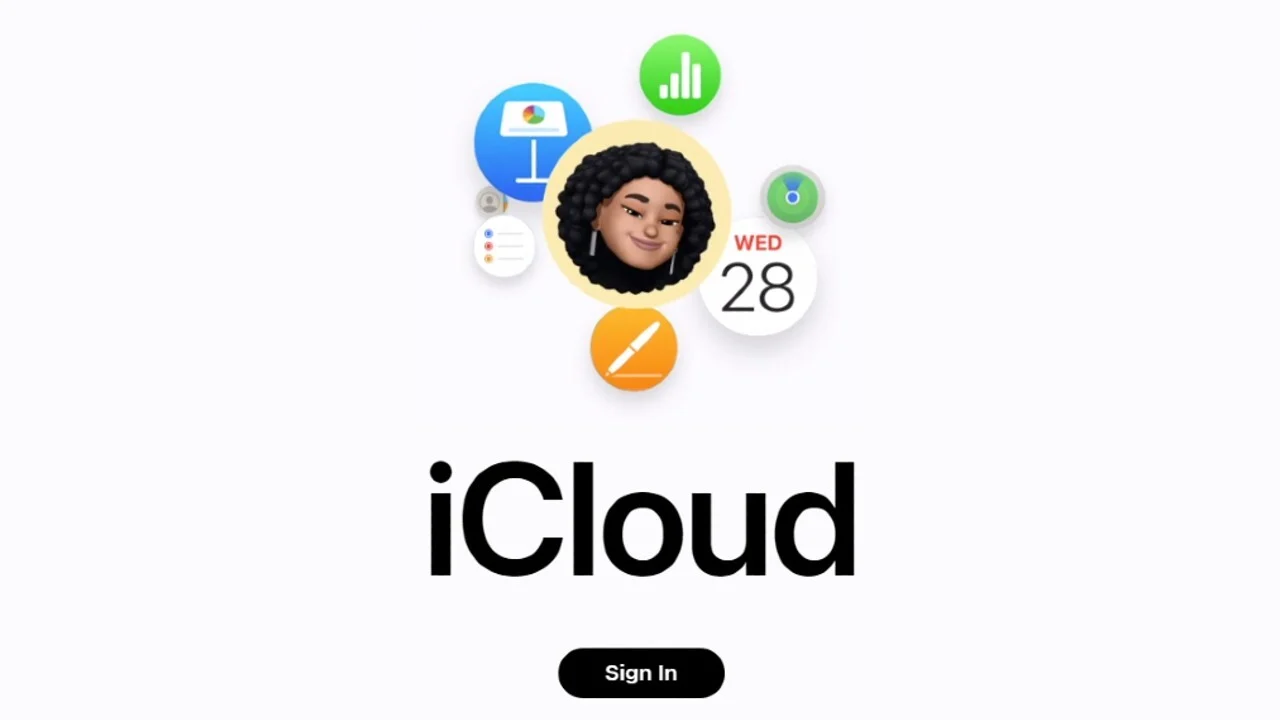Technology
Google surprises Pixel 10 users with new AI powered Pixel Journal app and here is what it can do
Google has launched the Pixel Journal app exclusively for Pixel 10 users, bringing AI powered prompts, insights, and privacy controls that rival Apple’s Journal app.

At its much-anticipated Pixel 10 launch event, Google quietly introduced a brand-new app — the Pixel Journal. The move comes almost two years after Apple unveiled its own Journal app in 2023 alongside iOS 17. With this release, the two tech giants are once again going head-to-head, this time in the growing space of digital journaling.
ALSO READ : China secretly prepares yuan-backed stablecoins as global summit nears and insiders say it could rival the dollar
AI at the core of journaling
The Pixel Journal isn’t just another diary app. Powered by on-device AI models, it actively encourages users to write by offering smart prompts. These prompts may include memories, past entries, or even personal goals, turning routine journaling into a guided and reflective experience.
Users can also enrich their entries by adding photos, locations, and activities, and even log their moods — making it more than just text on a screen.
Personalized insights
Google promises that the Pixel Journal will learn from each user’s writing habits. Over time, it will surface insights like:
- When you usually write your entries.
- Which entry was your longest by word count.
- How many entries you made in a week or month.
This data-driven approach aims to make journaling more engaging, while also giving users a glimpse into their own behavioral patterns.
Privacy first
In an era where personal data is constantly under scrutiny, Google has added a much-needed safeguard: the option to lock the Pixel Journal app. This ensures that private thoughts remain truly private, protected from prying eyes.
Pixel 10 exclusive — for now
Currently, the Pixel Journal is available only to Pixel 10 series owners. However, Google hinted that it may roll out to older Pixel devices in the near future. That said, the exclusivity could be a deliberate move to attract more buyers to the newly launched Pixel 10.
The bigger picture
The launch underlines a subtle but important narrative — Google and Apple’s ongoing rivalry. By launching the Pixel Journal, Google has not only matched Apple’s offering but also added its own AI-powered twist.
Digital journaling is no longer just about writing memories. With AI insights, multimedia entries, and privacy controls, Google is betting big on making journaling a daily habit for millions.
For Pixel 10 users, this might just be another reason to celebrate — and for Apple, perhaps another reason to watch its back.
Technology
How to Free Up iCloud Storage Without Losing Your Data: A Complete Step-by-Step Guide
Running out of iCloud space? Here’s how to clean storage safely, manage backups, delete large files, and organise your Apple cloud data without risking important photos or documents.

If you’ve ever seen the alert “Your iCloud storage is full”, you know how disruptive it can be. Backups stop working, new photos fail to upload, and apps that depend on iCloud—like Messages, Drive, or Mail—slow down or stop syncing.
With Apple offering only 5GB of free iCloud space, most users hit the limit sooner than expected. The good news: you can free up space, organise your iCloud, and protect your important data by following simple steps.
This guide breaks down exactly how iCloud storage works and how to manage it safely across iPhone, iPad, Mac, and Vision Pro.
iCloud Storage vs Device Storage: Know the Difference
Before clearing space, it’s important to understand what you’re deleting.
Device Storage
- Located physically on your iPhone, iPad, or Mac
- Holds apps, downloaded media, system files
iCloud Storage
- Hosted online under your Apple ID
- Syncs photos, messages, backups, documents, and app data across devices
Important:
Deleting from your device does not clear iCloud space — and deleting from iCloud does not free device space.
Understanding this prevents accidental data loss.

How to Free Up iCloud Storage
Apple now offers a “Recommended for You” cleanup tool (iOS/iPadOS 17+), which identifies files you can safely remove.
How to access it:
- Go to Settings > your name > iCloud
- Tap Recommended for You
- Review suggestions (large files, duplicate photos, unused backups)
- Delete items you don’t need
If something isn’t listed, you can still delete it manually.
1. Reduce Your iCloud Backup Size
iCloud backups often consume the most space—especially if apps you no longer use are included.
Choose which apps to back up:
- Settings > your name > iCloud
- Tap Manage Account Storage or Storage > Backups
- Select your device
- Toggle off apps you don’t want included in backups
Delete old backups:
- Open the backup
- Tap Turn Off & Delete
Keep in mind: deleting a backup disables future backups for that device unless re-enabled.
2. Delete Photos and Videos (The Biggest Space Hog)
iCloud Photos syncs your entire library across devices — and eats up storage fast.
On iPhone/iPad/Vision Pro:
- Select and delete unwanted photos
- Empty Recently Deleted to free space immediately
On Mac/iCloud.com:
- Delete photos directly from the Photos app or browser
In iCloud Drive:
- Use the Files app (iPhone/iPad) or Finder (Mac)
- Delete large documents or folders
- They remain in Recently Deleted for 30 days
3. Clean Up Files, Messages, and Mail
iCloud Drive:
- Delete old PDFs, downloads, duplicate documents
- Check Recently Deleted
Messages in iCloud:
- Delete large attachments
- Clear full conversations
- Remove videos, photos, stickers and audio files
iCloud Mail:
- Delete emails, especially promotions
- Use the Mail Cleanup tool (if available)
4. Remove Contact Posters and Images
Contact posters introduced in iOS 17 take up surprising amounts of iCloud storage.
To delete them:
Settings > iCloud > Storage > Contact Images
Remove unnecessary visuals.

5. When to Upgrade to iCloud+
If your photo library, backups, and files exceed what cleanup alone can handle, upgrading may be more practical.
iCloud+ plans offer:
- More storage (50GB / 200GB / 2TB / 6TB / 12TB)
- Private Relay
- Hide My Email
- Expanded HomeKit support
How to upgrade:
Settings > your name > iCloud > Manage Storage > Upgrade
For many users, even the 50GB plan solves most issues.
Final Thoughts
iCloud is deeply integrated into how Apple devices store and sync important information. Running out of space doesn’t mean you have to lose data — it just means you need to manage what stays in the cloud and what doesn’t.
By reviewing backups, deleting unnecessary files, and understanding what iCloud really stores, you can keep your digital life organised without fear of losing memories or essential documents.
Technology
Massive AirPods Price Crash Shocks Shoppers… Apple’s Biggest Black Friday Deals in Years Go Live
From AirPods Pro 3 to AirPods Max, the deepest discounts of the year are dropping — and some models just hit their lowest price ever.

Every year, Black Friday turns into a global treasure hunt — but rarely does the hunt end with genuine price drops on Apple devices. Yet 2025 is proving to be an exception. In a wave of surprise price cuts, AirPods Pro 3, AirPods Pro 2, and the newly refreshed AirPods 4 have all plunged to their lowest prices ever, marking one of the most aggressive Apple audio sales in recent memory.
And shoppers are scrambling.
TechRadar’s audio editor Becky Scarrott , who tracks Apple audio trends year-round, called this year’s drop “the first time Apple’s newest earbuds have seen any meaningful discount.”
The headline-grabber?
AirPods Pro 3 — originally $249 — now selling for just $219.99 at Amazon.
A Rare Deal on Apple’s Flagship Earbuds
For Apple fans, the AirPods Pro 3 introduce two of the company’s flashiest new features:
- Heart-rate tracking
- Live Translation via Apple Intelligence
And unlike earlier generations, their Active Noise Cancellation is now so advanced that reviewers have compared it to “stepping inside a portable recording studio.”
But deals on them? Practically unheard of — until now.
Older AirPods Models Are Seeing Even Bigger Discounts
If you don’t need the newest model, the savings get even wilder.
At Walmart, the previous-generation AirPods Pro 2 have fallen from $249 to $139. Over in the UK, Amazon has pushed the same model down to £169 — its lowest-ever price.
Even the newly released AirPods 4 are turning heads:
- AirPods 4 w/ ANC — $109.99 (Amazon)
- Standard AirPods 4 — $69.99 (Amazon)
Both models mark the cheapest entry point into the AirPods lineup since their creation by Apple founder Steve Jobs.
The Best Buy Wildcard Deal: Up to $130 Off With Trade-In
If you’re willing to part with an old pair of headphones — even from non-Apple brands like Sony , Beats , or Bose , Best Buy is offering a trade-in deal that can drop the price of AirPods Pro 3 to just $119.99.
That is nearly half-price for Apple’s flagship earbuds — and one of the biggest shock discounts in this year’s Black Friday lineup.
AirPods Max Also Get a Rare Price Cut
The luxurious AirPods Max (USB-C) — usually $549 — are sitting at $429.99 at Amazon in the U.S. and £449 in the UK. Not the cheapest ever, but still well below the usual premium.

Reviewers still praise the Max for:
- Exceptional noise cancellation
- Near-perfect audio quality
- Seamless pairing across iPhone, MacBook, and iPad
Why This Year’s Discounts Matter
Apple rarely discounts its own products — leaving big retailers like Amazon, Walmart , Target, and Best Buy to take the lead.
This year, they’re clearly trying to dominate the audio market by price alone. And consumers worldwide are already taking notice.
From college students upgrading old Lightning-charged buds to travelers eyeing the AirPods Max, the demand surge is unmistakable.
The Bottom Line: These Deals May Not Last Long
Given Apple’s usual pricing strategy, these markdowns are expected to vanish quickly — especially for the AirPods Pro models.
If you planned to buy AirPods this year, this might be the moment you’ve been waiting for.
Read more DAILY GLOBAL DIARY
Technology
We Found 30+ Apple Black Friday Deals You Shouldn’t Miss — Massive Discounts on MacBooks, iPads, AirPods and More…
From the M4 MacBook Air to the newest Apple Watch SE, Black Friday 2025 brings rare, deeply vetted Apple discounts across Amazon, Best Buy and Target — and some prices hit all-time lows.

Black Friday rarely makes Apple fans smile — the company is known for premium prices and almost no direct discounts. But 2025 has flipped the script.
For one day only, retailers like Amazon Best Buy and Target are slashing prices on iPads, MacBooks, AirPods and accessories, with some deals hitting their lowest price of the entire year.
The Wirecutter Deals Team, led by senior tech journalist Caitlin McGarry verified these offers to ensure the markdowns are legitimate — not the fake, inflated “Black Friday specials” often seen elsewhere.
And yes… some savings are genuinely huge.
MacBook Deals: The Biggest Price Drops of the Season
M4 MacBook Air — New All-Time Low
The lightweight powerhouse, the new MacBook Air (M4) hit a price point we haven’t seen before. This is the laptop Wirecutter calls “the best for most people,” thanks to its long battery life, premium feel and blazing performance.
Deal price: At major retailers (lowest ever)
If you’ve been eyeing a MacBook upgrade, this is the moment.
Apple AirPods Deals: Pro Audio at Rare Discounts
AirPods Pro 3 — Best for Hardcore Apple Users
- Target: $220 (normally $249)
- Amazon: $220
These are Apple’s most advanced earbuds yet, with excellent noise cancellation, crisp sound and improved durability (IPX57 rating).
But they’re not perfect — some users find the squeeze/swipe controls annoying, and calls can sound artificial in noisy spaces.
Still, this price rarely appears.
AirPods Max — Luxury Noise-Cancelling Headphones
- Amazon / Best Buy: $400 (normally $470)
These over-ear beasts deliver elite ANC, unmatched build quality and seamless pairing. The only drawbacks? They’re heavy and the included case offers weak protection.
But at $400, this is tied for their lowest-ever price.

iPad Deals: Powerful Tablets at Major Discounts
iPad Air (11-Inch, M3, 128 GB) — The “Upgrade” Pick
Amazon: $450 (normally $525)
A perfect middle ground between the entry-level iPad and the high-end iPad Pro. It features the M3 chip, upgraded cameras and compatibility with keyboards and monitors for a more desktop-like experience.
Wirecutter calls it “the best tablet for most users who want real performance.”
iPad Air (13-Inch, M3) — Bigger Canvas, Same Power
Amazon: $645
Perfect for artists, multitaskers and professionals. It works with Pencil Pro, has a bright screen and carries the latest internals — without the iPad Pro’s premium price tag.
iPad Pro (11-inch, M5, 256 GB) — Top Pro Tablet Pick
Amazon / Best Buy / Walmart: $900 (normally $1,000)
Packed with the M5 chip, a stunning OLED display and improved multitasking in iPadOS 26, this is the best tablet on the market for creators and power users.
The only catch? It still isn’t a true laptop replacement — especially for coding or high-end editing workflows.
Accessory Deals Worth Considering
Belkin Connect Pro Case (for 11” iPad Pro M4/M5)
Amazon: $108 (with clipped coupon; normally $150)
Belkin’s well-built case provides a laptop-like experience with solid keyboard and trackpad quality. It’s not as premium as Apple’s Magic Keyboard, but it’s a reliable, comfortable option — especially at this price.
If you’re looking to upgrade your iPad Pro setup, this is a strong pick.

Why These Apple Deals Actually Matter
Apple devices rarely go on sale — and when they do, the discounts are often small or restricted to older models. This year is different.
AirTags for $65
Apple Watch SE for $200
MacBook Air M4 hitting all-time lows
iPad Pro M5 discounted across multiple retailers
These aren’t lukewarm deals — they are genuine, Wirecutter-verified offers that can save buyers hundreds of dollars.
And with Apple’s ecosystem growing stronger each year, a timely Black Friday purchase can feel like your tech life just leveled up.
Read more DAILY GLOBAL DIARY
-

 US News1 week ago
US News1 week ago“She Never Made It Out…” Albany House Fire Claims Woman’s Life as Family Pleads for Help to Bring Her Home
-

 Entertainment1 week ago
Entertainment1 week agoXG Star Cocona Shares a Brave Truth at 20 — “I Was Born Female, But That Label Never Represented Who I Truly Am…”
-

 Entertainment1 week ago
Entertainment1 week agoSamba Schutte Reveals the Surprise Cameo in Pluribus That “Nobody Saw Coming”… and Why John Cena Was Perfect for the Role
-

 Entertainment5 days ago
Entertainment5 days agoSaudi Arabia’s entertainment revolution… Red Sea Film Foundation CEO Faisal Baltyuor says he ‘wears many hats’ — but one mission drives them all
-

 Entertainment1 week ago
Entertainment1 week agoMandy Moore Signs On for a Bold New Peacock Erotic Thriller — “A Twisted Game Where the Student Becomes the Teacher…”
-

 Entertainment3 days ago
Entertainment3 days agoAmy Schumer and Chris Fischer Split After 7 Years of Marriage — Inside Their ‘Cohesive’ and Amicable Divorce
-

 Politics6 days ago
Politics6 days ago“If I Can’t Beat Jimmy Kimmel, I Shouldn’t Be President…” Trump Drops Bold Claim Ahead of Hosting Kennedy Center Honors
-

 Entertainment6 days ago
Entertainment6 days ago“Heartbreaking… Devastating… Deaths”: ‘It—Welcome to Derry’ Creators Hint at a Finale Fans Aren’t Ready For




























